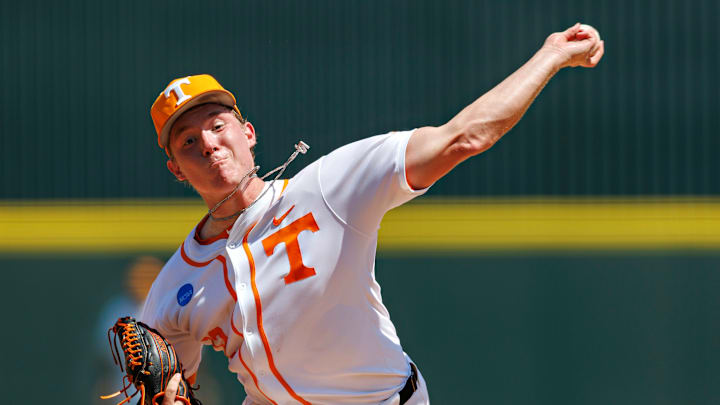There's being fashionably late to an event, and then there's the St. Louis Cardinals' decision to finally prioritize swing-and-miss stuff after the lights were off and everyone had gone home.
The Cardinals have finally awakened to the pitching revolution and learned that pitching to contact no longer works in the modern iteration of baseball. Velocity and spin are the name of the game, and it was clear in the Cardinals' first draft under new president of baseball operations Chaim Bloom that the team has fully bought into this model.
However, the Cardinals' longtime strategy of taking pitch-to-contact hurlers continues to leave an imprint on the organization. Michael McGreevy, who looks to be a piece of the Cardinals' rotation in 2026, is the epitome of this kind of pitcher, and the higher levels of the Cardinals' farm system are loaded with these players.
With lower-ceiling guys like Quinn Mathews, Max Rajcic, Cooper Hjerpe and Brycen Mautz dotting the terrain of the upper minors and the strikeout-oriented pitchers with high-class stuff such as Nate Dohm, Mason Molina, Tanner Franklin and Liam Doyle, the last of whom touched Double-A for the playoff portion of Springfield's championship run, in the lower rungs of the minors, the Cardinals will soon face a new challenge.
How will the Cardinals adapt to coaching a new style of pitchers?
The Cardinals have struggled to develop homegrown pitchers over the past decade or so, but before that, the team was among the best in the league at churning out pitching talent that largely pitched to contact in an era that was friendlier to that type of player. In an effort to find someone to spearhead their movement to hunting strikeouts, the Cardinals hired Rob Cerfolio and Matt Pierpont following the 2024 season, both of whom came from pitching-rich teams in the Cleveland Guardians and Seattle Mariners, respectively.
Cerfolio and Pierpont will hopefully be able to get the Cardinals' pitching back on the right track, but the more nuanced changes for individual pitchers will have to come from their teams' coaches. It's an open question as to whether the current crop of pitching coaches in the Cardinals' farm system is capable of developing a style of pitcher that has been virtually nonexistent within the organization for several years. There's a chance that when these high-octane arms reach the upper levels, the Cardinals could pivot and usher in some new coaches within the farm system who may be more familiar with the types of arms the Cardinals would then possess at those ranks.
Another pressing issue that the Cardinals have pledged to sort out is their technology. The team had long eschewed increasingly common utilities like a dedicated pitching lab, which the Cardinals appear to still be attempting to construct. They will need to return to being on the cutting edge of the newest innovations to maximize success with these pitchers who are blessed with high potential.
Perhaps the most important facet of coaching in the age of fireball pitchers is handling the frequency of injuries. The major league club was incredibly fortunate last season to have almost no pitchers head to the injured list, but the lower levels weren't so lucky, as major injuries racked the Cardinals' farm system. Tekoah Roby, Cooper Hjerpe and Sem Robberse all underwent Tommy John surgery last season, and as pitchers chase higher velocity, these trips to the injured list have become more common.
Because of high-velocity, high-spin pitchers' susceptibility to injuries, the Cardinals will need to accrue plenty of reinforcements to back them up. This will likely mean trading heavily from the big league roster and acquiring young, hard-throwing pitchers in bulk as the club embarks on a rebuild.
If all goes well and the Cardinals can successfully adjust to the new normal of pitching in modern baseball, the team's first wave of strikeout artists should hit the major leagues in the next few years. But the coaches who have become used to helping guys with below-average stuff and solid control will have a very different job on their hands with this new breed of Cardinal. It will be fascinating to see how these pitchers can develop in a system that isn't used to handling them.
